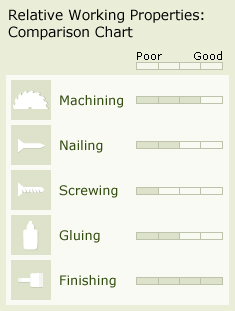
Birch (Betula spp.)

Birch (Betula spp.) is composed of 30 to 50 species. All species look alike microscopically. The important species are yellow birch (Betula alleghaniensis), sweet birch (Betula lenta), and paper birch (Betula papyrifera).
Grades Available: Sel/Btr, Red 1 Face Sel/Btr, #1 Common, #2 Common
Sizes Available: 4/4
Distribution: North America. Yellow birch, sweet birch and paper birch grow principally in the Northeastern and Lake States. Yellow birch and sweet birch also grow along the Appalachian Mountains to northern Georgia. Yellow, sweet and paper birch are the source of most birch lumber and veneer.
The Tree: Birches can reach a height of 70 ft, with a diameter of more than 2 ft.

General Wood Characteristics: The wood varies slightly among species. The wood of yellow birch and sweet birch is heavy, hard and strong. All birches have a fine, uniform texture. Sweet birch and yellow birch are difficult to work with hand tools and difficult to glue, but easily machined. Yellow birch has a white sapwood and light reddish-brown heartwood. Sweet birch has light-colored sapwood and dark brown heartwood tinged with red.
Working Properties: Working properties may vary with species. In general, birches split during nailing; if successfully nailed, they have good nail-holding properties.
Durability: Rated as slightly or nonresistant to heartwood decay.
Uses: Yellow and sweet birch lumber and veneer are used principally in the manufacture of furniture, boxes, baskets, crates, woodenware, cooperage, interior finish and doors. Birch veneer goes into plywood used for flush doors, furniture, paneling, radio and television cabinets, aircraft and other specialty uses.

